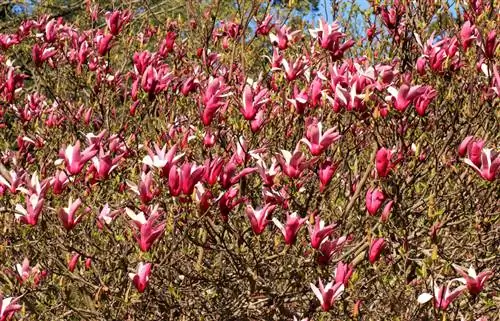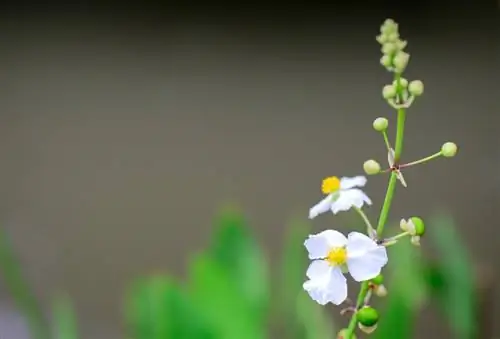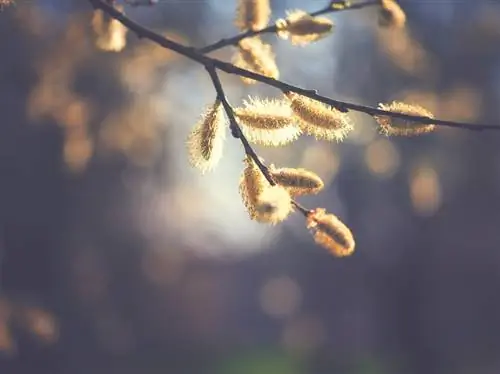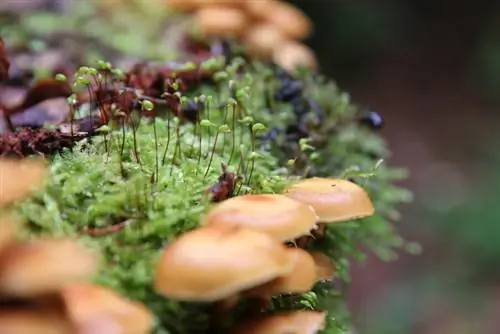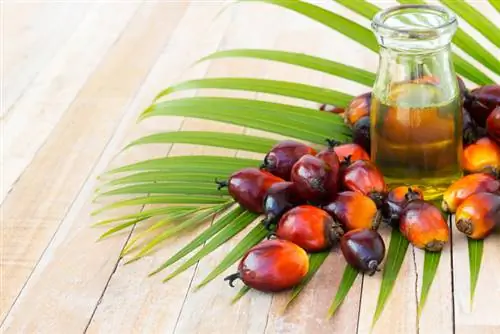- Author admin [email protected].
- Public 2023-12-16 16:46.
- Last modified 2025-01-23 11:20.
Small sky blue, rarely white, pink or yellow flower stars - this is the distinguishing mark of the forget-me-not. The plant from the rough-leaved family is usually grown as a spring flower in the garden or in a pot. A profile of the popular garden plant.

What is a forget-me-not wanted poster?
The forget-me-not is a popular garden plant with small, light blue, white, pink or yellow flowers. It belongs to the roughleaf family and occurs in 50 species. The main flowering period is from April to September, depending on the species.
Small profile of the forget-me-not
- Botanical name: Myosotis
- Popular Names: Blue Eyebright
- Family: Raublattaceae
- Occurrence: Europe, Asia, Africa, North America
- Species: 50 species, 41 of which are in Europe
- Leaves: green, rough, hairy
- Flowers: 5 sepals, arranged in a bell or funnel shape
- Flower color: mainly light blue, rarely white, pink, yellow
- Flowering time: depending on the species from April to September
- Propagation: seeds, root division, cuttings
- Height: 10 to 50 centimeters, some species up to 80 centimeters
- Age: annual, biennial, perennial
- Toxicity: few toxins in non-toxic concentration
- Winter hardiness: absolutely hardy
Where does the name forget-me-not come from?
The name has been attested since the 15th century. It is attributed, among other things, to a legend in which the delicate plant asked God not to forget it.
Forget-me-not is also considered a flower of loy alty and farewell in love.
Location and flowering time depend on the variety
The non-poisonous forget-me-not is one of the spring flowers, as the varieties most commonly grown in the garden or in containers come from the forest forget-me-not. They have their main flowering period in May.
The forget-me-not is also popular as a plant on the edge of the bank. For this purpose, the swamp forget-me-not is grown as a perennial.
In nature, the most favorable location for forget-me-nots is shady to partially shaded. The perennial does not tolerate direct sun well. The soil must never dry out completely and may be swampy with the swamp forget-me-not.
Ornamental plant only since the 19th century
Forget-me-not was considered a wild plant over the centuries that was also used as a medicinal plant.
It was not until the 19th century that the flower was grown as an ornamental plant in gardens. The breeding forms used here come from either the forest forget-me-not or the swamp forget-me-not.
Forget-me-nots can be grown indoors, but are not suitable as houseplants.
Tip
The ornamental plant has the common name forget-me-not, which is based on a legend, not only in the German language. In English it is called Forget-me-not. In the past, the plant, like the lobelia, was popularly referred to as faithful to men.


